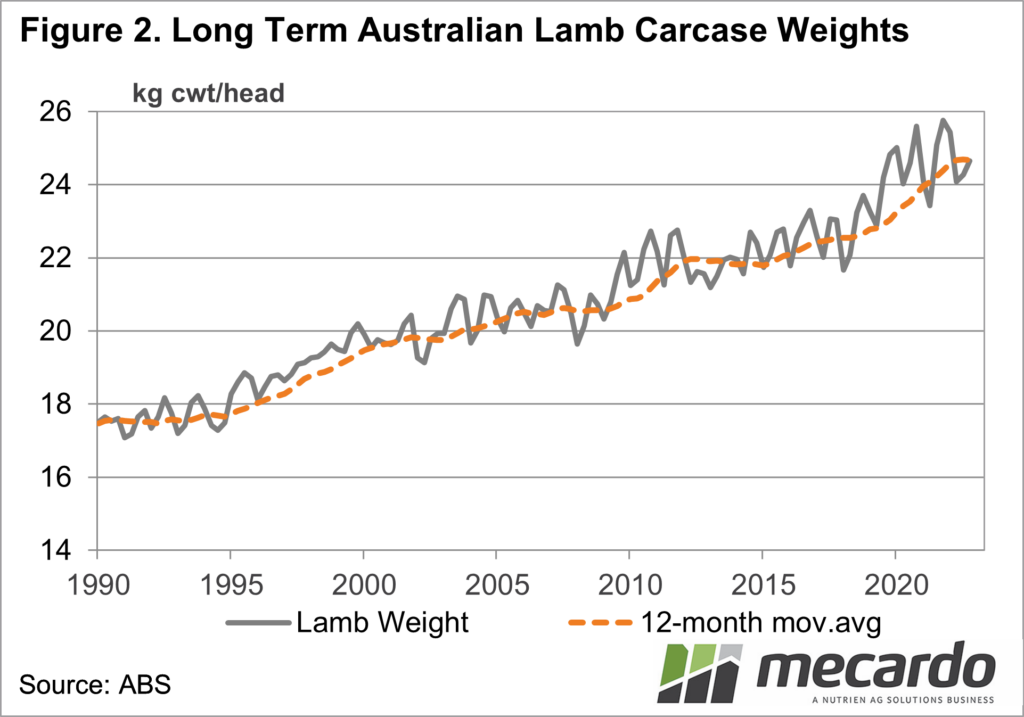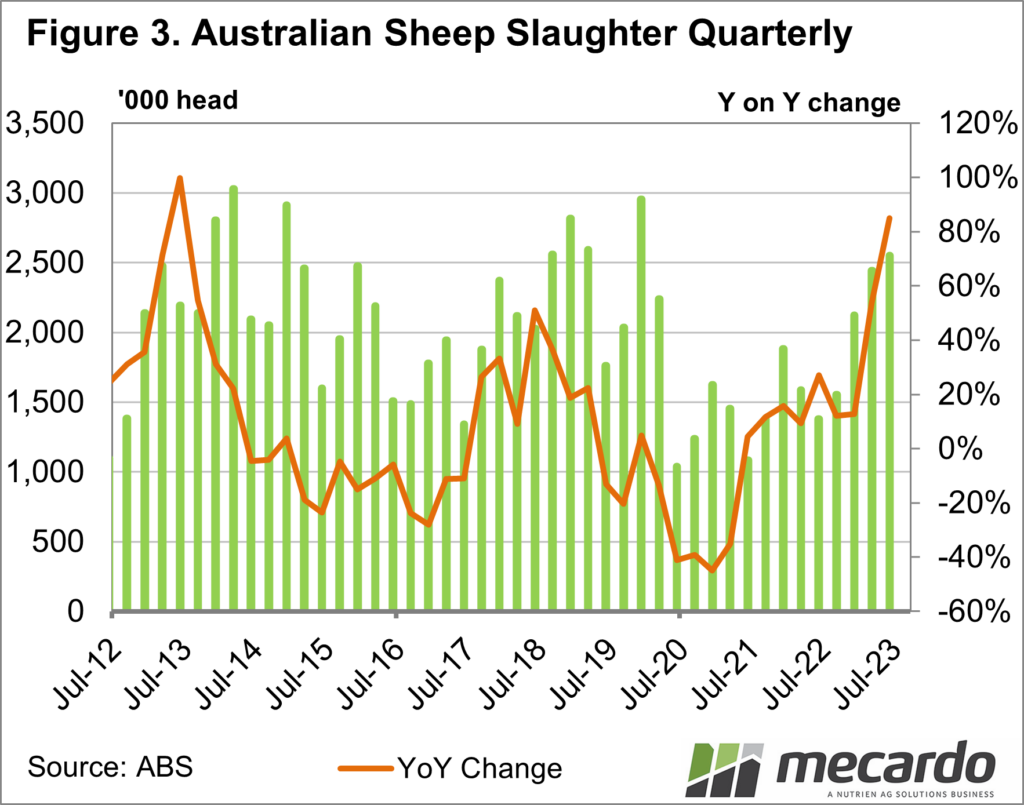We used to get Australian Bureau of Statistics (ABS) livestock slaughter data monthly. Now it comes quarterly, and as such we get a big drop of data to disseminate four times a year. Last week the June data was released, and here we look at the preliminary findings.
Figure 1 tells much of the story. The June quarter saw a strong jump in lamb slaughter, and despite the issues with staff and space, processors managed to post the third strongest quarter on record.
The delayed supply many predicted after a wet spring and summer eventuated in the June quarter. Total lambs processed were up 8.4% on the March quarter, 9.8% on the December quarter, and 11.4% on June last year.
Slaughter was stronger across all states, with Victoria, the largest slaughter state, leading the charge to post its strongest number on record. Victoria only beat the March 2019 level by 3,000 head, but it shows just how many lambs were about.
Lamb production, as in the amount of lamb meat produced, hit a new high in June. Higher slaughter weights compared to the previous big kill quarters in 2017 and 2018 drove the record. Even so, slaughter weights weren’t quite as strong as expected.
Figure 2 shows the average weight of lambs slaughtered in the June quarter was 24.7kgs. With many lambs being held over we expected to see weights closer to the 25.8kgs we saw in June 2022, but we can identify some reasons for this.
Tanking wool, sheep and lamb prices across the June quarter might have encouraged sales of more female meat breed lambs, and merino lambs. The merino especially will help keep a lid on slaughter weights, and it is an indication the flock build is coming to an end.
A more obvious indicator of a flock decline is sheep slaughter. Figure 3 shows sheep processing hit a three-and-a-half-year high in the June quarter, jumping a massive 85% on June 2022.
Looking forward, Meat and Livestock Australia (MLA) forecast 2023 lamb slaughter at 21.9 million head. To June lamb slaughter stood at 11.65 million head. This suggests the second half of the year will see just 10.24 million head processed, down 7% on last year.
What does it mean?
Rather than taking the numbers to mean there will be fewer lambs slaughtered in the second half, we think there will be more than 22.5 million head slaughtered in 2023. We’re likely on track to see 23 million head go over the hooks, eclipsing the previous record set in 2016.
The good news for price is that plenty of lambs, and likely future breeders and merinos, look to be exiting the system. Limiting further increases in supply should see prices find a base, and hopefully improve if and when demand picks up.
Have any questions or comments?
Key Points
- ABS quarterly slaughter data was released last week, with very strong lamb and sheep slaughter.
- Slaughter weights were weaker than expected, indicating more merinos and females have added to supply.
- At current rates we might have a record lamb slaughter year.
Click on figure to expand
Click on figure to expand
Click on figure to expand
Data sources: ABS, MLA, Mecardo















